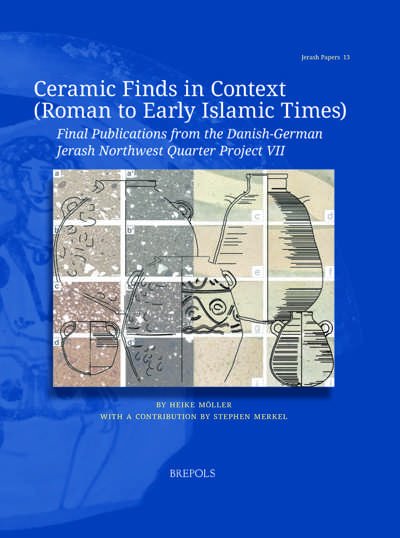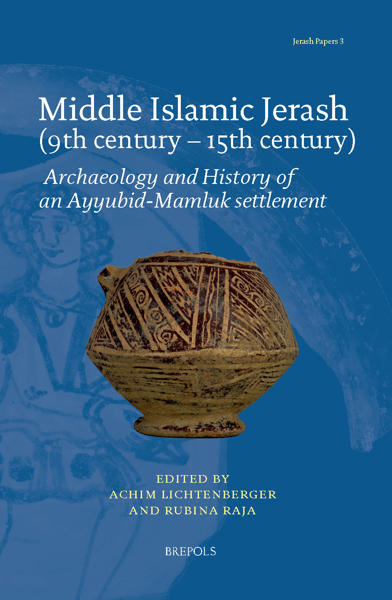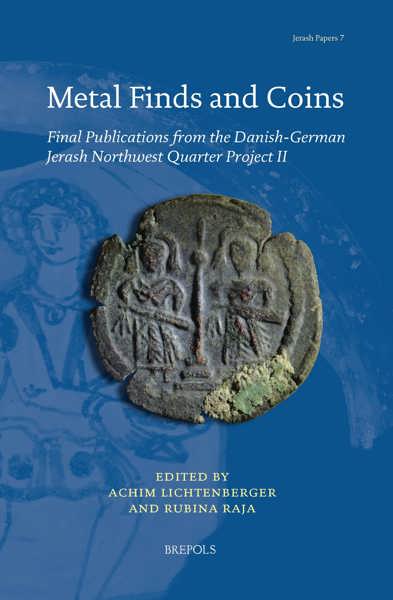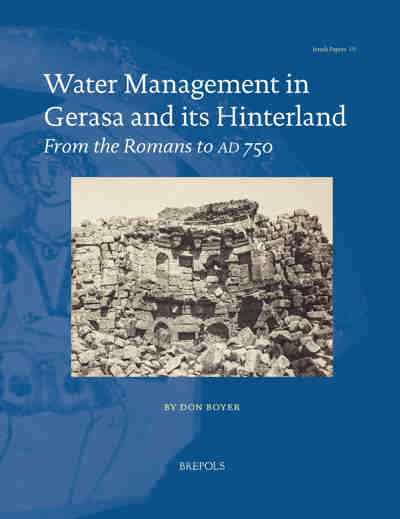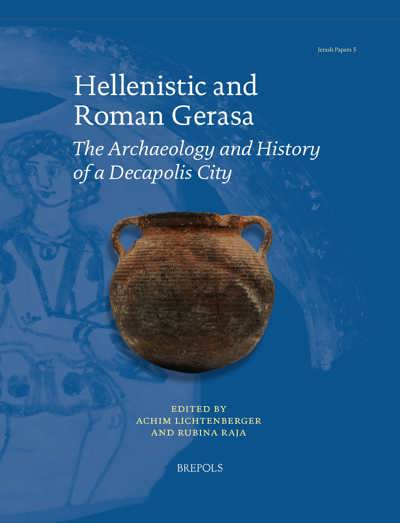
Ceramic Finds in Context (Roman to Early Islamic Times)
Final Publications from the Danish-German Jerash Northwest Quarter Project VII
Heike Möller, Stephen Merkel
- Pages: xii + 262 p.
- Size:216 x 280 mm
- Illustrations:92 b/w, 35 col., 7 tables b/w., 4 maps b/w, 1 maps color
- Language(s):English
- Publication Year:2025
- € 115,00 EXCL. VAT RETAIL PRICE
- ISBN: 978-2-503-60997-3
- Paperback
- Available
- € 115,00 EXCL. VAT RETAIL PRICE
- ISBN: 978-2-503-60998-0
- E-book
- Available
Heike Möller is research assistant at the German Archaeological Institute (DAI) in Berlin (Germany) and a specialist for Hellenistic, Roman and Late Antique pottery in the MENA-Region. She wrote her phD
about pottery production and trade-networks in the Eastern Marmarica (Northwest Egypt) at Freiburg University and was part of many field projects in Turkey, Jordan, Egypt and Tunisia. Her special interests are pottery, production
and trade-networks with a focus on technology and form transfer in regional and supra-regional context. Numerous articles have been published by her, including in particular intensive studies on the material of the Eastern Marmarica (Egypt), Gadara and Jerash (Jordan) and Chimtou (Tunisia) examined from different perspectives.
Stephen Merkel is a research associate of the Vrije Universiteit Amsterdam and the School of Archaeology at the University of Oxford and is a specialist in the archaeometry of metals, glass and ceramics. He attended the University of Maryland and UCL and wrote his PhD thesis on medieval silver metallurgy and trade at the German Mining Museum in 2015. Since then he has published books and articles relating to the archaeology of high temperature technologies and movement of materials ranging from the Bronze Age to the High Middle Ages and has been an active member and driving force in numerous projects.
The Decapolis city of Jerash has long attracted attention from travellers and scholars, due both to the longevity of the site and the remarkable finds uncovered during successive phases of excavation that have taken place from 1902 onwards. Between 2011 and 2016, a Danish-German team, led by the universities of Aarhus and Münster, focused their attention on the Northwest Quarter of Jerash — the highest point within the walled city — and this volume is the seventh in a series of books presenting the team’s final results.
This volume provides an in-depth analysis into the ceramic materials found in Jerash’s Northwest Quarter, much of which comes from largely undisturbed contexts. The ceramic finds presented in this volume are typo-chronologically evaluated and contextually analysed. The authors then use this dataset as a starting point to explore the micro- and macro-networks that existed in ancient Gerasa from Roman to Early Islamic times more broadly, examining how finely meshed exchange could take place on a micro-regional level, and assessing what conditions were required in order for trade to occur.
List of Illustrations
Chapter 1. Introduction: Ceramic Finds from the Danish-German Jerash Northwest Quarter Project
Aim
Method
Challenges
Impact
Chapter 2. Typo-Chronological Outline of Northwest Quarter Ceramics
Tableware
Cooking Ware
Common Ware
Juglet, Amphoriskos, Pilgrim Flask
Chapter 3. Ceramic in Context
Trenches A/S
Trenches C/D/E
Trenches J/N/W
Trench U
Trenches K/P/V
Chapter 4. Economic Network: Imported Pottery Finds in the Northwest Quarter
Western Mediterranean/Western North African Imports
Eastern Mediterranean/Black Sea Imports
Chapter 5. Synthesis
Imported Vessels — Why?
Networks
The Last Decades before 749 CE
Appendix 1. Analytical and Technical Studies of Roman, Byzantine, and Umayyad Ceramics from Jerash, Jordan – STEPHEN MERKEL
Introduction
Material and Analytical Methods
Analytical Results
Discussion and Interpretation of Results
Conclusions
Appendix 2. ‘Total Registration’ — Selected Contexts
(available online at https://doi.org/10.1484/A.25202780 @ DGJNWQP)
Works Cited
Index of Localities / Regions
Index of Subjects
